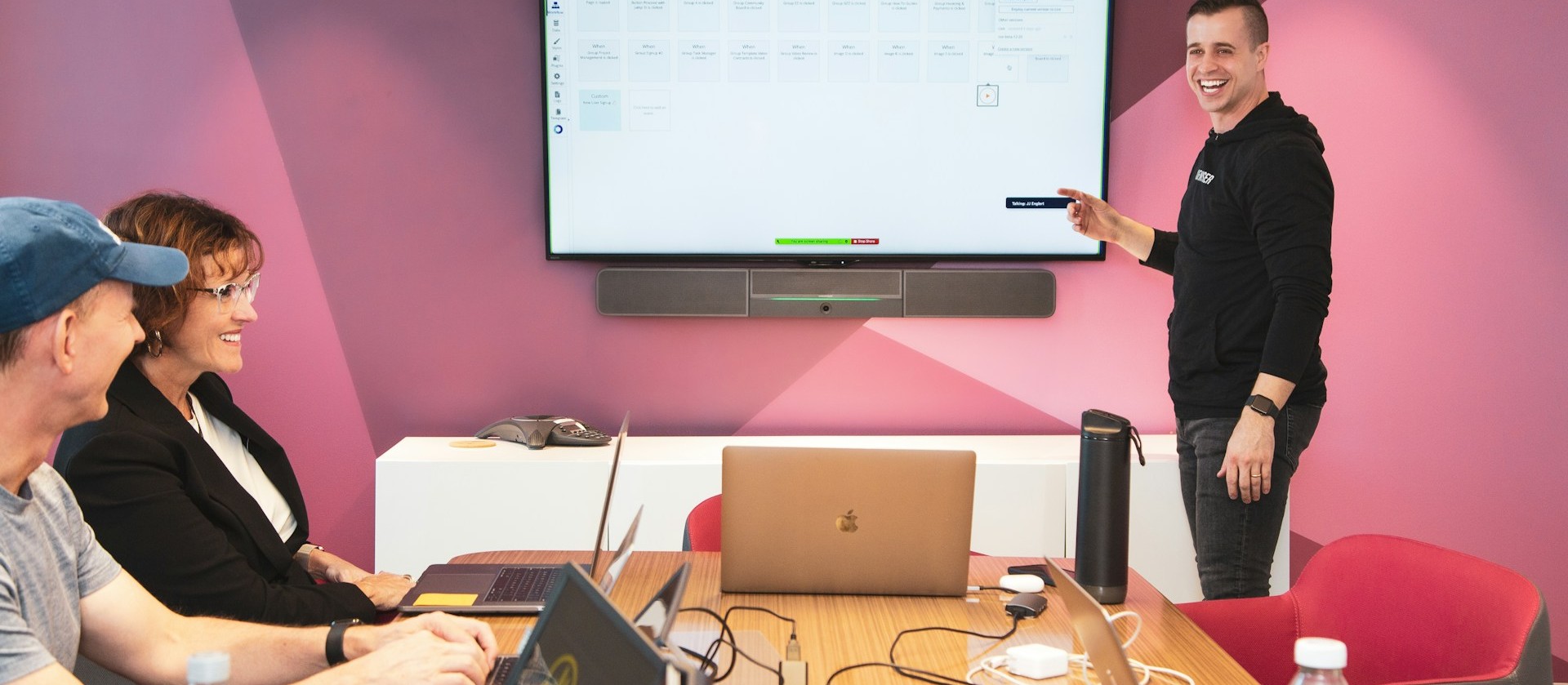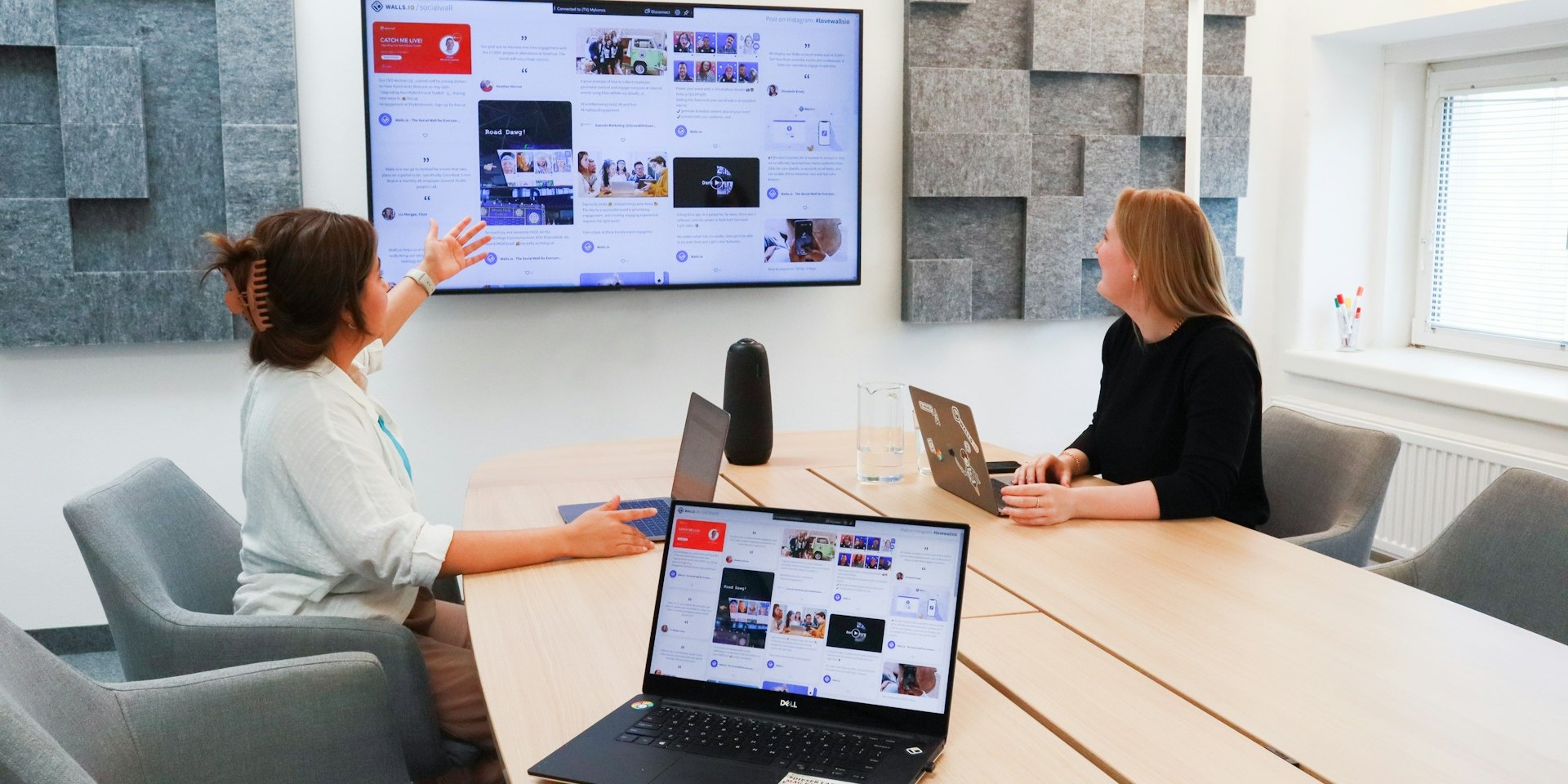Beyond BYOD: The Rise of BYOID in Modern Collaboration Architectures

We’re Long Past BYOD—Here’s why I say so.
Personally, I believe we’ve moved far beyond the traditional idea of BYOD.
Let’s break it down by considering two typical scenarios in enterprise meeting rooms: employees and visitors.
 Wired screen sharing was challenging before wireless streaming tools
Wired screen sharing was challenging before wireless streaming tools
1. Employees
BYOD (Bring Your Own Device) originally meant using your personal device for work. But in most of the companies I know, that’s no longer the case. Organizations don’t rely on employees bringing their own gear to access corporate resources. Instead, they prefer to provide managed laptops—and in some cases, smartphones as well.
So, technically speaking, it’s rarely ever Your Own Device.
Beyond that, all corporate collaboration and communication now happens through UCC platforms (Unified Communications & Collaboration), where each employee has a unique digital ID.
In this model, content sharing or "bringing a meeting" into a room is less about plugging in a device and more about pairing your user ID with the room system—whether that’s from your assigned laptop or mobile device.
Once connected, everything else follows: your content, your calendar, your contacts, your meetings...
That’s why the real game today isn’t about Bring Your Own Device, but rather:
Bring Your Own ID.
2. Visitors
Now here’s where the original concept of BYOD still applies: visitors.
They arrive with their own unmanaged, non-corporate devices. Supporting them effectively means offering flexible connection options—each with its pros and cons:
-
Physical connections
HDMI and USB-C are essential (at least for the near term), until USB-C finally becomes universal. But let’s face it—ports and cables don’t last forever. Connectors wear out or get damaged, whether on the device side or the cable end. It's a simple but fragile option.
I personally propose this option to always be available, but dedicated to visitors and used only as a last resort. -
Wireless sharing
This is a well-known, widely supported approach. Most modern devices offer native screen-sharing capabilities, and many room systems can receive these through built-in protocols or proprietary apps. For casual visitors, it’s often the fastest route to get content up on screen. -
Wireless BYOM
Not my personal favorite. It enables visitors to run the meeting from their own device using their own UCC platform, but the process can be clunky. It usually requires proprietary apps, driver installations, and a strong Wi-Fi connection. Audio/video lag is common—and frustrating. -
Modern UCC platform flexibility
Here’s where things shine. Most leading UCC solutions now support guest access and cross-platform interoperability. A visitor can share their screen directly through the room’s platform—often from just a web browser, no install required.
Even better, many platforms support third-party invites (e.g., a Teams call inside a Zoom Room), making the system adapt to the visitor instead of the other way around.
 No matter the device more than the user ID or browser enabled tools.
No matter the device more than the user ID or browser enabled tools.
In other words, modern meeting rooms aren’t just about ports and protocols anymore—they’re about connecting people's profiles and content, securely and seamlessly, no matter what device or platform they bring.
What's your experience?
Do you have a different perspective?
PS: This reflection is based on a post I wrote a while ago in Spanish. While it was born in another language, I think the message still holds true.
-
Xchange Advocates are recognized AV/IT industry thought leaders and influencers. We invite you to connect with them and follow their activity across the community as they offer valuable insights and expertise while advocating for and building awareness of the AV industry.






Please sign in or register for FREE
If you are a registered user on AVIXA Xchange, please sign in
Brilliantly articulated!
For visitors, we still need to maintain simplicity without compromising security or user experience.
Thanks for sharing this!
Thank you @Mohannad Mousa, CTS .
At the end is about making collaboration easier for users, so it makes sense UCC platforms trying to answer that call.
AV on the other hand gears the UX in any collaboration scenario so must be aware about tools that might be integrated.
A comprehensive scope involves the best of both.
Some parts of this is very true. But trying to force the method you call BYOID feels "bulky". For anyone. And lets face it, there aren't UC equipment in all spaces today, nor will there be. And alot of meetings are still just with the persons in the room, without using UC systems.
Strong, wifi however is probably more common and present everywhere. That along with BYOD (for everyone) using USB-C (and most computers newer than 3-4 years do have USB-C with Alt mode DP on them today) and simple solutions from providers like Barco and Crestron solves the driver-less use of cameras, microphones and speakers.
Just plug in the dongel that is in the room. Choose on the dongel if you also want the USB devices the be added or not and off you go. For visitors and employees. If there isn't a prepared installed system in the room that ou really want to use that is... And if there is, that's usually the fastest way to have a good conversation, press one button and the meeting is on. If prepared correctly.